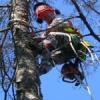I'm looking at those things on the websites and wondering if they are following the legal regs for anything sold as sterling, or if they are unintentionally misbranding. The snaps on those findings probably aren't silver, just silver colored, so the snaps as a whole may have an issue with being legally marketed as sterling--But, it depends on whether the snap would be an exemption and what the regs are in the state the business is located in.
See, the jewelry industry is very tightly regulated as to what is allowed to carry the "ster." or ".925" quality marks. In order for a jeweler to legally market something as sterling, and quality mark it as .925 or ster., the entire "silver" colored portions of the object must be .925 pure silver by weight. That means any portion that is colored similarly or has the appearance of being colored similarly, (e.g., solder, coins, and most findings, stainless steel portions, some buckle hardware, etc.) must be offset by a certain amount of fine silver (.999 pure) so the item as a whole is 925 parts out of 1000 pure silver. A deviance of only 4 parts per 1000 is allowed.
This also means that silver colored platings or portions also have to be offset, even if it is platinum--some fine silver has to be added to offset the platinum.
The federal regs allow some exemptions (see below), but some states do not--if is it silver colored and somehow attached, the entire object must be .925 pure silver to be marketed as sterling. I believe the regs of some countries are even more stringent and typically do not allow for the exemptions listed below.
Most jewelers I know will follow the "pure silver of my jewelery is .925 of the entire weight" and do not try to figure out which exemptions are and aren't allowed in each state, usually because they sell their jewelry in several different states or online. These jewelers offset the solder and findings added to sterling or coin items by adding weighed amounts of fine silver, usually in the bezels, filigree, or ear-wires, to make their item legally able to be marketed and quality marked as sterling everywhere.
----
§ 23.6 Misrepresentation as to silver content.
( a ) It is unfair or deceptive to misrepresent that an industry product contains silver, or to misrepresent an industry product as having a silver content, plating, electroplating, or coating.
( b ) It is unfair or deceptive to mark, describe, or otherwise represent all or part of an industry product as "silver," "solid silver," "Sterling Silver," "Sterling," or the abbreviation "Ster." unless it is at least 925/1,000ths pure silver.
( c ) It is unfair or deceptive to mark, describe, or otherwise represent all or part of an industry product as "coin" or "coin silver" unless it is at least 900/1,000ths pure silver.
( d ) It is unfair or deceptive to mark, describe, or otherwise represent all or part of an industry product as being plated or coated with silver unless all significant surfaces of the product or part contain a plating or coating of silver that is of substantial thickness.
( e ) The provisions of this section relating to markings and descriptions of industry products and parts thereof are subject to the applicable tolerances of the National Stamping Act or any amendment thereof.
Note 1 to § 23.6: The National Stamping Act provides that silverplated articles shall not "be stamped, branded, engraved or imprinted with the word 'sterling' or the word 'coin,' either alone or in conjunction with other words or marks." 15 U.S.C. 297(a)
Note 2 to § 23.6: Exemptions recognized in the assay of silver industry products are listed in the appendix.
Appendix:
( c ) Exemptions recognized in the industry and not to be considered in any assay for quality of a silver industry product include screws, rivets, springs, spring pins for wrist watch straps; posts and separable backs of lapel buttons; wire pegs, posts, and nuts used for applying mountings or other ornaments, which mountings or ornaments shall be of the quality marked; pin stems (e.g., of badges, brooches, emblem pins, hat pins, and scarf pins, etc.); levers for belt buckles; blades and skeletons of pocket knives; field pieces and bezels for lockets; bracelet and necklace snap tongues; any other joints, catches, or screws; and metallic parts completely and permanently encased in a nonmetallic covering.




